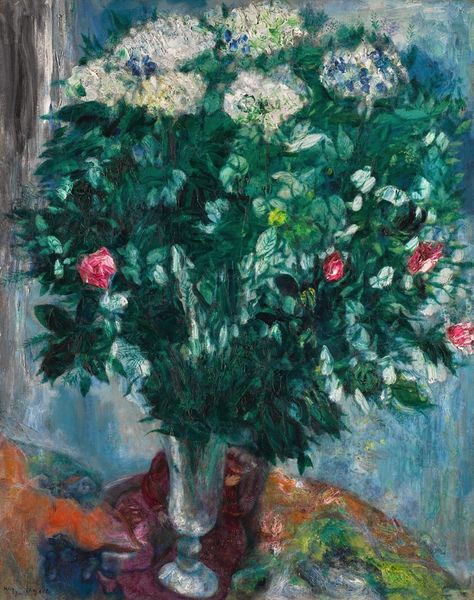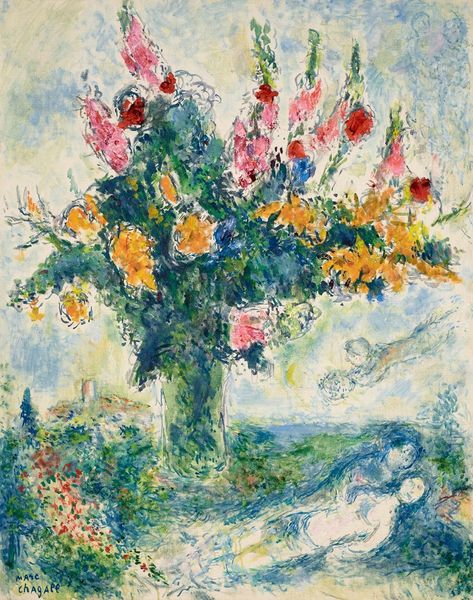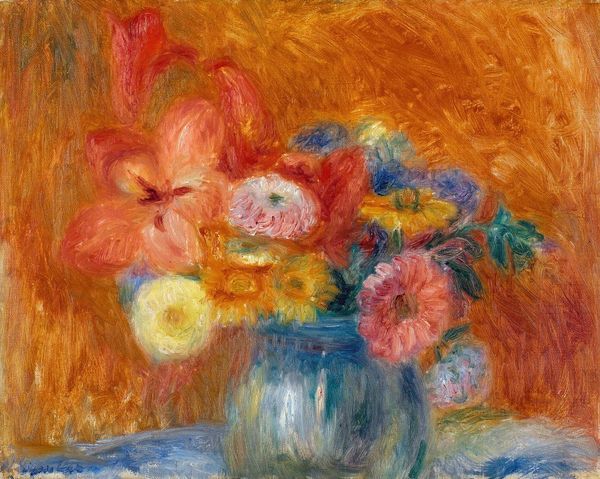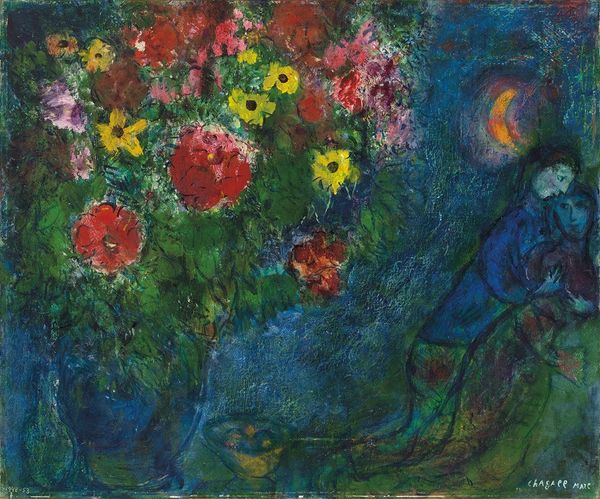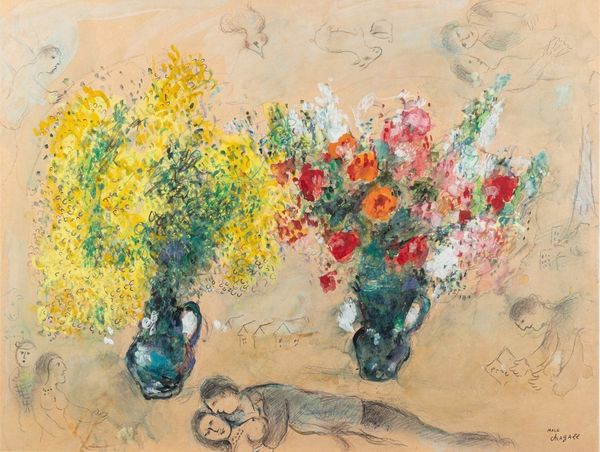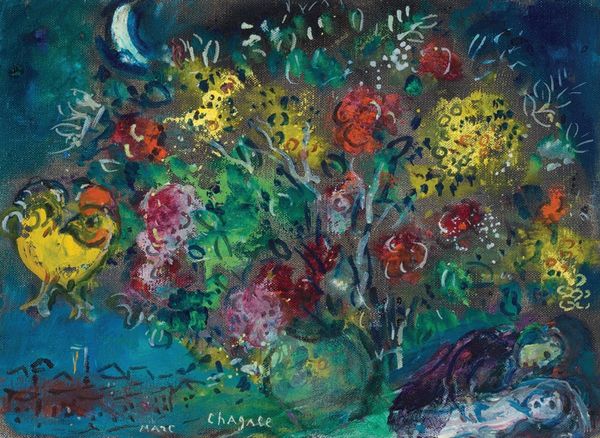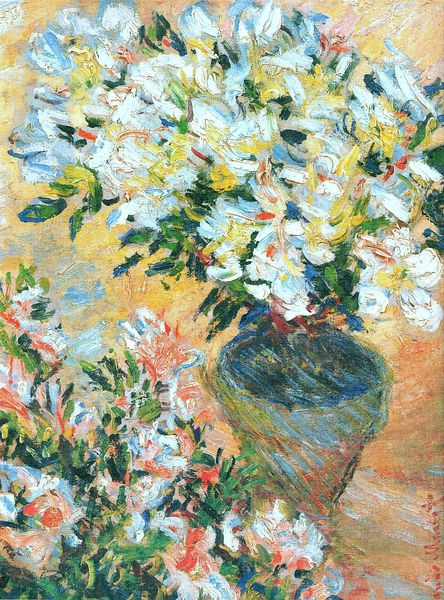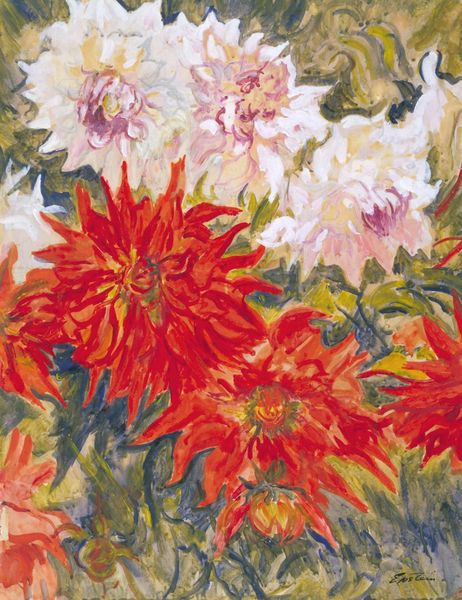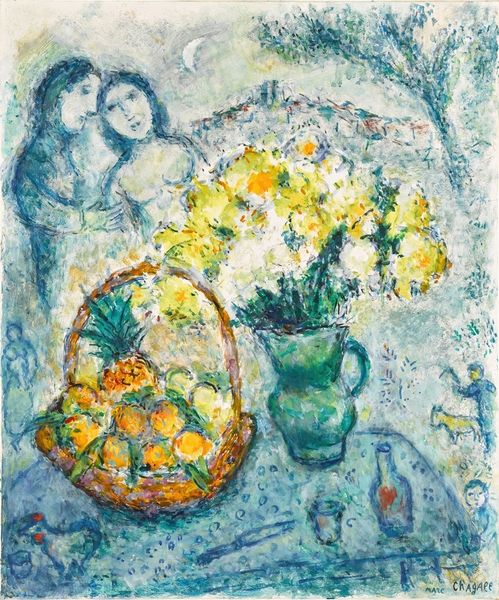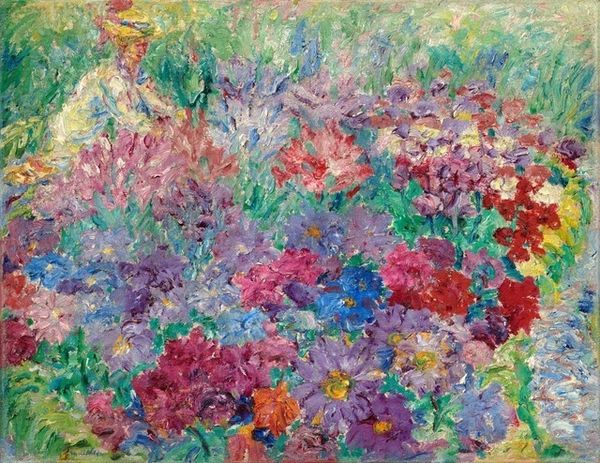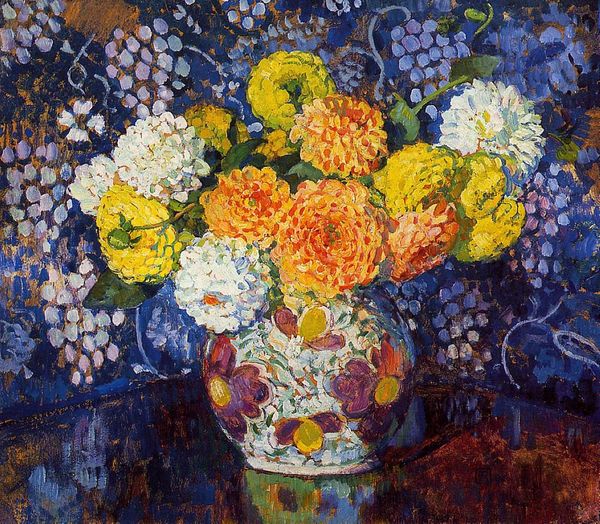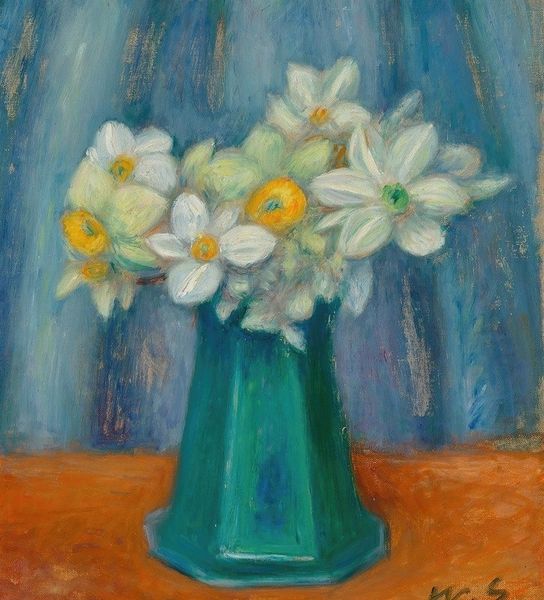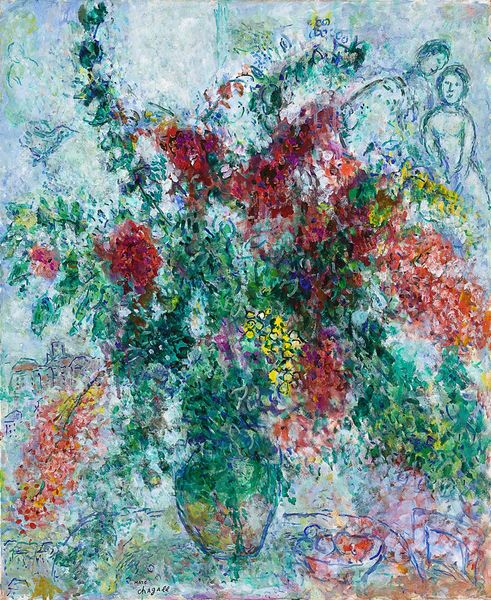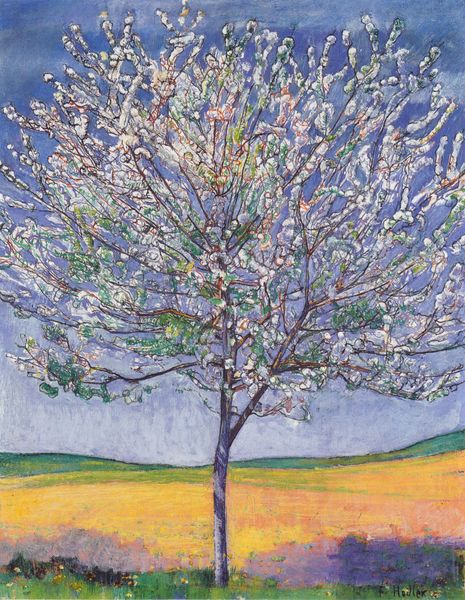
plein-air, oil-paint
#
impressionism
#
plein-air
#
oil-paint
#
impressionist landscape
#
watercolor
Copyright: Public Domain: Artvee
Curator: Up next, we have Pierre-Auguste Renoir’s "Chrysanthemums," painted in 1881 using oil. What's your first take on this burst of blooms? Editor: Well, I immediately sense a feeling of abundant, late-summer joy. The profusion of flowers feels almost overwhelming. Curator: It's interesting you say that. The late 19th century saw a rise in the middle class, which subsequently saw flowers and domestic ornamentation play a key role in defining one’s social status, and Renoir found himself painting still lifes like these for dealers often. Editor: Yes, I see how Renoir captured that sense of bourgeois indulgence. But even more striking is his depiction of chrysanthemums. The Victorians associated different flowers with feelings. Were chrysanthemums similarly charged with specific symbolism at the time? Curator: That’s a fascinating question, but I am unaware of any connection, if there ever was one. Rather, Renoir seems mostly interested in how these flower’s textures work to reflect light. What strikes me about it, perhaps as part of this intention, is the distinct absence of shadows. Editor: A kind of radiant optimism, maybe? Beyond just a floral arrangement, Renoir’s "Chrysanthemums" seems to be hinting towards themes of warmth, abundance, and the joy of ephemeral beauty. Curator: Absolutely. Given that Renoir was constantly battling financial pressures at the time, this painting could reflect how artwork became enmeshed with larger networks of art dealers and their patronage. Editor: A complex story revealed through these fleeting flowers. Curator: It does make one think, doesn't it?
Comments
No comments
Be the first to comment and join the conversation on the ultimate creative platform.
